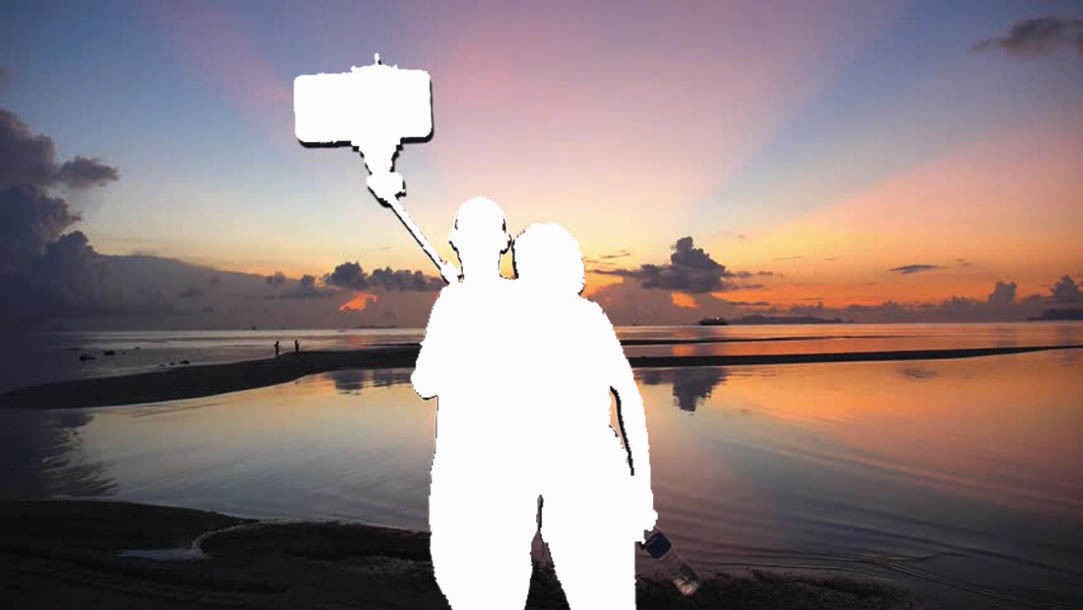
On the art of the selfie and chronicling our sojourns in modern times

You’re out on vacation -- somewhere exotic perhaps. The sun is setting, and the light is just right. As you whip out your smartphone to take a picture and forever store this memory in the great cloud in the sky, do you for a second wonder, how will this look on Facebook?
Maybe you do. And maybe you don’t. But the fact remains, that most of our pictorial memories now end up on one social medium or another. Mostly though, it’s Facebook or Instagram. Once there, they begin a life of their own, garnering responses from our friends and family, in the form of likes and comments.
It wasn’t always like this. Back in the days of the traditional camera, there was an entire process to taking pictures. First, you had to lug a bulky camera around. You needed a film to put inside. Then, once you’d taken the pictures, you’d have to take the film out, and get into a car to go someplace to have it delivered. The pictures wouldn’t be developed immediately, so you’d have to make a return journey, a day or two later. It was an arduous affair to say the least. You wouldn’t do it just anyway.
Taking pictures was a personal affair, the only way to preserve a memory: something you could look back on, when life had passed you by. And they weren’t conversation pieces either: nobody would probably whip out a photo album of a recent trip to Istanbul at a dinner party. Memories were private.
Today, we snap away with careless abandon, thanks to the smartphone. There are no space limitations. We can take a million pictures and have room for another million. Back in the day, you had around 30 clicks; and that was that! You had to get it right. There were no second chances.
Yet something has changed. Not all our pictures make it to social media. In fact, we are very conscious and deliberate about how we show ourselves on platforms like Facebook. It has something to do with a social psychological concept known as the looking glass self – that our sense of self is based on the perceptions of those we interact with -- and on social media, the first thing people see are the pictures -- so we try and control these pictures, so as to control peoples’ perceptions of us.
And then there’s the social test… According to a study, comments on your profile picture strongly affect your level of perceived physical, social and professional attractiveness. If a picture gets negative comments, or a low number of likes, we change it, till we find something that works -- in short, we’re searching for acceptance.
Elsewhere though, there is a growing concern that by constantly clicking away, we, as a generation, are missing the moment itself. After all, most amateur pictures don’t capture the feeling of excitement, ecstasy and wonder that are generally associated with any moment in time. Perhaps to personalise these artificial moments, we chose to push ourselves into the frame, with the selfie.
Now, the quality of the average picture we see online has gone down even further, with a silly human’s face being imposed on what could have been a generally amiable picture. And look at what it’s replaced: back in the day, you’d just ask a passerby to take a picture of you and yours by a background. They’d probably do a good enough job. But no, we must take silly duck-faced pictures at terrible angles, because it’s the ‘in’ thing to do.
Apparently it’s not the selfie itself, but what it represents. Question yourself this: have you ever seen a sad selfie? Probably not. What you may have seen are people out and about, having fun, travelling the world, and generally, living the life that you, the viewer, may be jealous of. So not only are you controlling how others perceive your life, you are also in turn trying to control how they feel about their own. "Bloody hell, Aasim’s gone on another vacation while I’m slaving away…"
There is a wonderful picture on the internet which fully grasps how far down the rabbit hole we have come. A bunch of people, mostly adults are watching an event unfold on the street. They are all armed with a bevy of devices, iPads, digital cameras and smartphones. In between the clicks and the saves, standing is an older woman. She’s just looking.
Years later, she might not have a picture to remember the event by, but most probably, she’ll remember how it felt to be there. To see it with her own God-given eyes. What will be left will be the impression. And that’s what it’s all about.